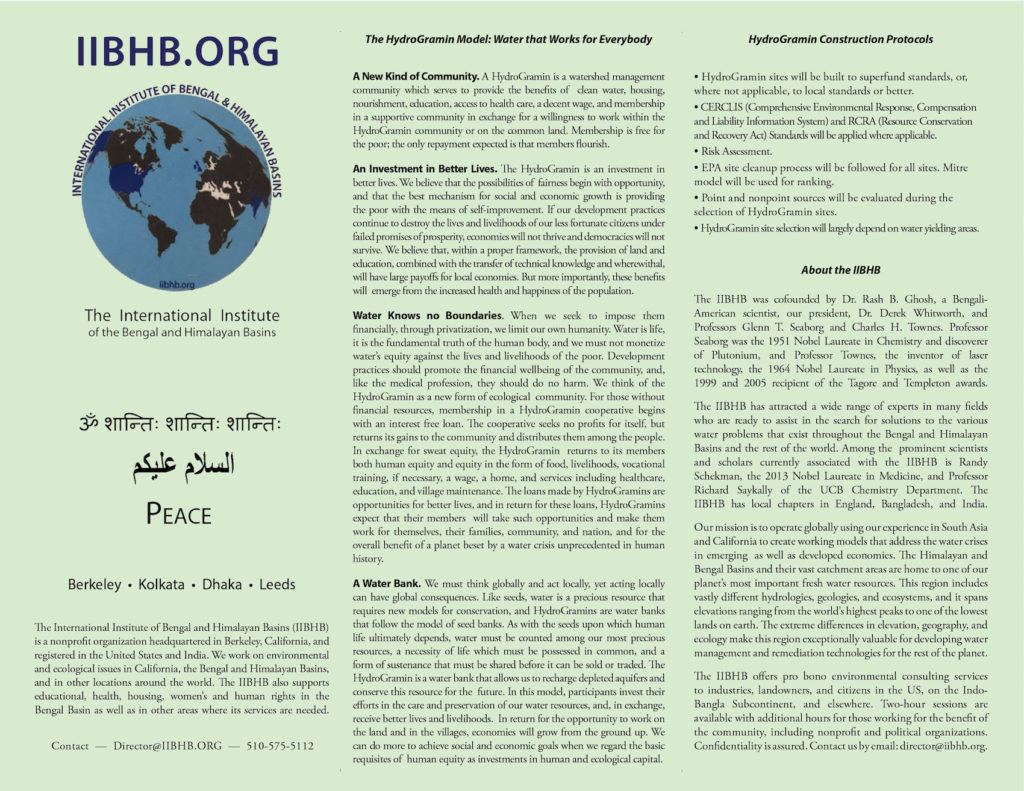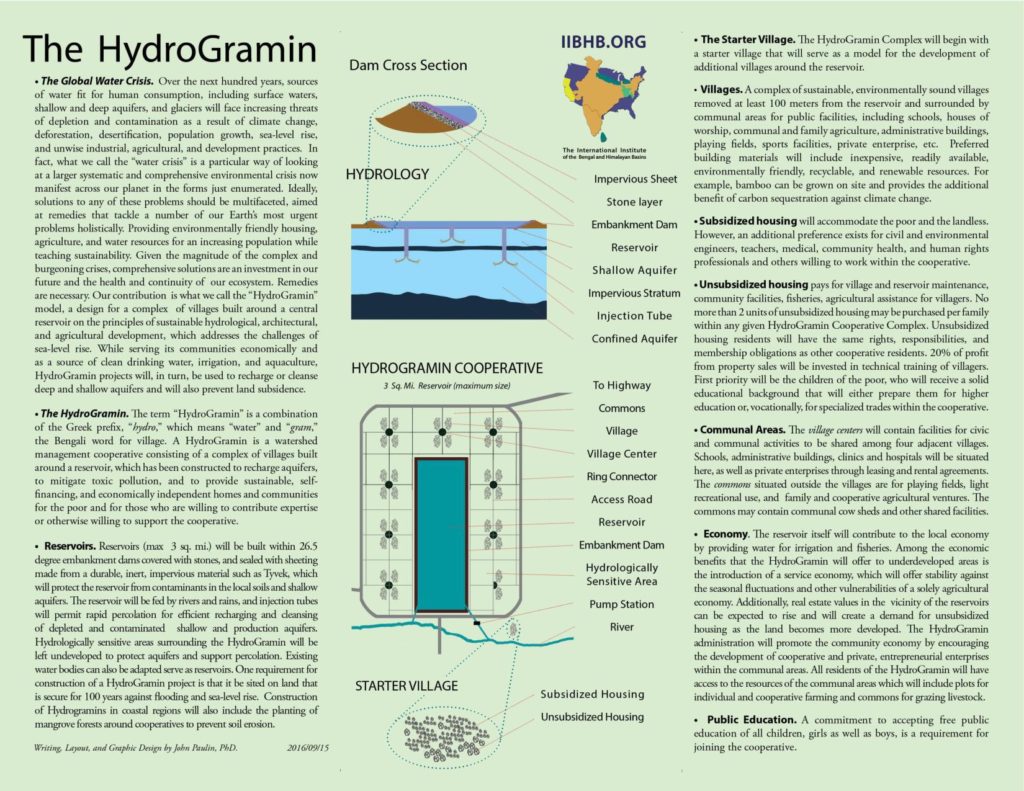The HydroGrameen Model (Formerly known as Bengal Basin Working Model)
HydroGrameen
Hydrogrameen (Hydrogramin) is a combination of Bengali and Indian words for “jhol” or “pani ” (both Sanskrit words), for water and “gau” or “garam” for village ). When work was in progress, it was known as Bengal Basin Working Model. Both Berkeley and Harvard professors also contributed in the development of the Bengal Basin model in late 1990s and early 2006. The Bengal Basin model was renamed “HydroGrameen” to reflect the Indo-Bangla culture and tradition where the idea was born and the work started.
The HydroGrameen Technology involves injecting fresh, clean water to replenish depleted aquifers in a safe way to protect the world’s most invaluable resource, water. This technology can be used to build a new watershed as well as to protect the existing one and make them self-sustaining by installing eco-housing based on eco-economics. The economics must be based on ecology, the environmental and improvement of quality of life. The drinking water research began in Ancient India when many civilizations at their dawn. This technology has taken shape after 35 years of work in Bengal Basin, Great Britain and California. Finally, it was in Berkeley, California that the technology has come to fruition. HydroGrameen has become possible with the availability of advance technology that has been developed by US and Europe and tested repeatedly and proven to be safe.
The Science
The purification of drinking water was practiced in ancient India using various methods, thus it is a shame to find the potable water in the Bengal Basin contaminated. The region has constantly struggled in its attempt to administer safe and adequate water resources and to make it easier for people to access safe drinking water. By the late 1980s, surface water, which had been the main source of drinking water in the region had become severely polluted. As a result, much of the population suffers from diarrhea and various water-borne diseases. Children are the most affected and many have died.
The Bangladesh government, UNICEF and various other aid groups have been attempting to help the people of the Basin, and their solution was to use groundwater as an alternative drinking water source. They began installation of approximately 4 million tube wells to provide drinking water from ground waters. At the time this idea seemed reasonable because of the Bengal Basins ample aquifers and because the deltaic alluvium there was easy to dig.
Unfortunately, this project was the cause of one of the worst environmental calamities in the delta’s history. People in the Bengal Basin drink much water because of the hot climate, the demands of physical labor, and the lack of alternative beverages. However, the groundwater from the tube wells used as a source of drinking water became increasingly contaminated with arsenic. This serious water problem can be attributed to the combination of ineffective water resource management, unwise agricultural practices, industrialization, and the rapid population increase.
In 1993, studies detected the first victims of arsenic-contaminated groundwater, and the Bangladesh government began to face a very difficult and serious water problem. Arsenic, is a known carcinogen, is highly toxic, and has increasingly affected the people in the Bengal Basin. It is a chemical element which until recent times existed in high but still safe concentrations in the soils of the region. Yet the installation of tube wells without careful scientific investigation and research, the concentrations of dissolved arsenic in the drinking water rose dramatically.
In 1993, studies detected the first victims of arsenic-contaminated groundwater, and the Bangladesh government began to face a very difficult and serious water problem. Arsenic, is a known carcinogen, is highly toxic, and has increasingly affected the people in the Bengal Basin. It is a chemical element which until recent times existed in high but still safe concentrations in the soils of the region. Yet the installation of tube wells without careful scientific investigation and research, the concentrations of dissolved arsenic in the drinking water rose dramatically.
Now, this disaster has become widespread in the Bengal Basin, and about 40 million, or one-third of the basin population suffers from a number of arsenic-related diseases, including warts, skin lesions, digestive problems, and cancers. In order to improve the water quality as well as to prevent additional environmental disasters, the government needs to conduct effective water management. The arsenic-contaminated groundwater problem is mainly caused by the lack of knowledge of water resources. One of the worst calamities in history could have been prevented through a careful study of geochemistry, geology (including quaternary geology) and hydrogeology. We stress the importance of studying water resources rigorously and in great detail and the need to thoroughly understand the causes of the arsenic -contaminated drinking water. Water is a necessity and the lifeblood of human beings. It is vital that the basic human right to safe and drinking water is not endangered.


